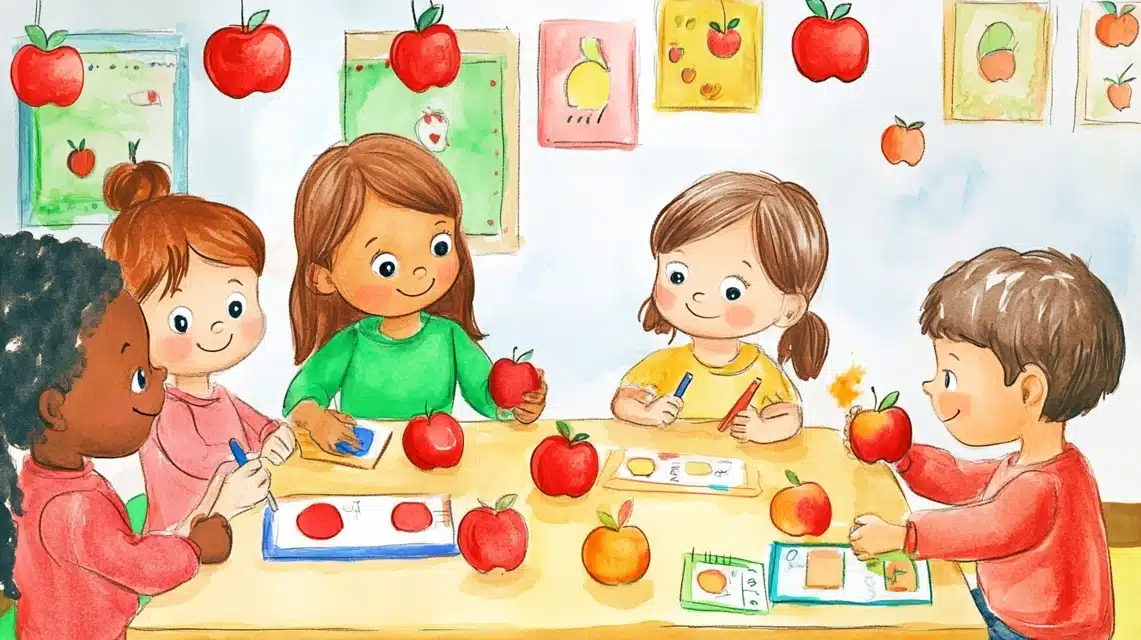Looking for fun apple activities for kindergarten that will keep your little learners entertained while helping them grow?
Teaching with apples is not only enjoyable but also a great way to mix math, science, and creative skills.
However, finding simple yet exciting activities that hold their attention can be a challenge. In this blog, we’ve put together a variety of apple-themed activities that are perfect for young learners.
From hands-on crafts to fun science experiments, these ideas will make your classroom a place where kids can learn while having a blast.
Ready to turn those apples into powerful learning tools? Let’s get into these creative ideas.
Why Apple Activities for Kindergarten Work
Apples make perfect teaching tools for kindergarten classrooms. These familiar fruits create exciting learning moments across different subjects while keeping young students engaged.
Apples are objects kids already know and like, making learning feel more friendly. Their bright colors and varieties create natural sorting and comparing activities.
You can count seeds, measure sizes, and weigh different apples for math lessons. Cutting apples shows the star inside and teaches fruit parts for science learning.
Apple crafts develop fine motor skills, while apple-themed books build vocabulary about growing cycles. Tasting different varieties creates sensory learning and teaches descriptive words.
These activities work well for both group lessons and individual learning centers, and most use low-cost materials that classrooms already have.
Children stay focused because they’re having fun while developing key skills. Apple-themed lessons bring joy while building strong foundations in math, science, reading, and creative thinking.
Fun Apple Activities for Kindergarten
Apple-themed activities are a fun way to engage young learners.
From crafting to counting, these activities help develop fine motor skills while celebrating the delicious fruit in playful, creative ways.
1. Apple Taste Test and Graphing
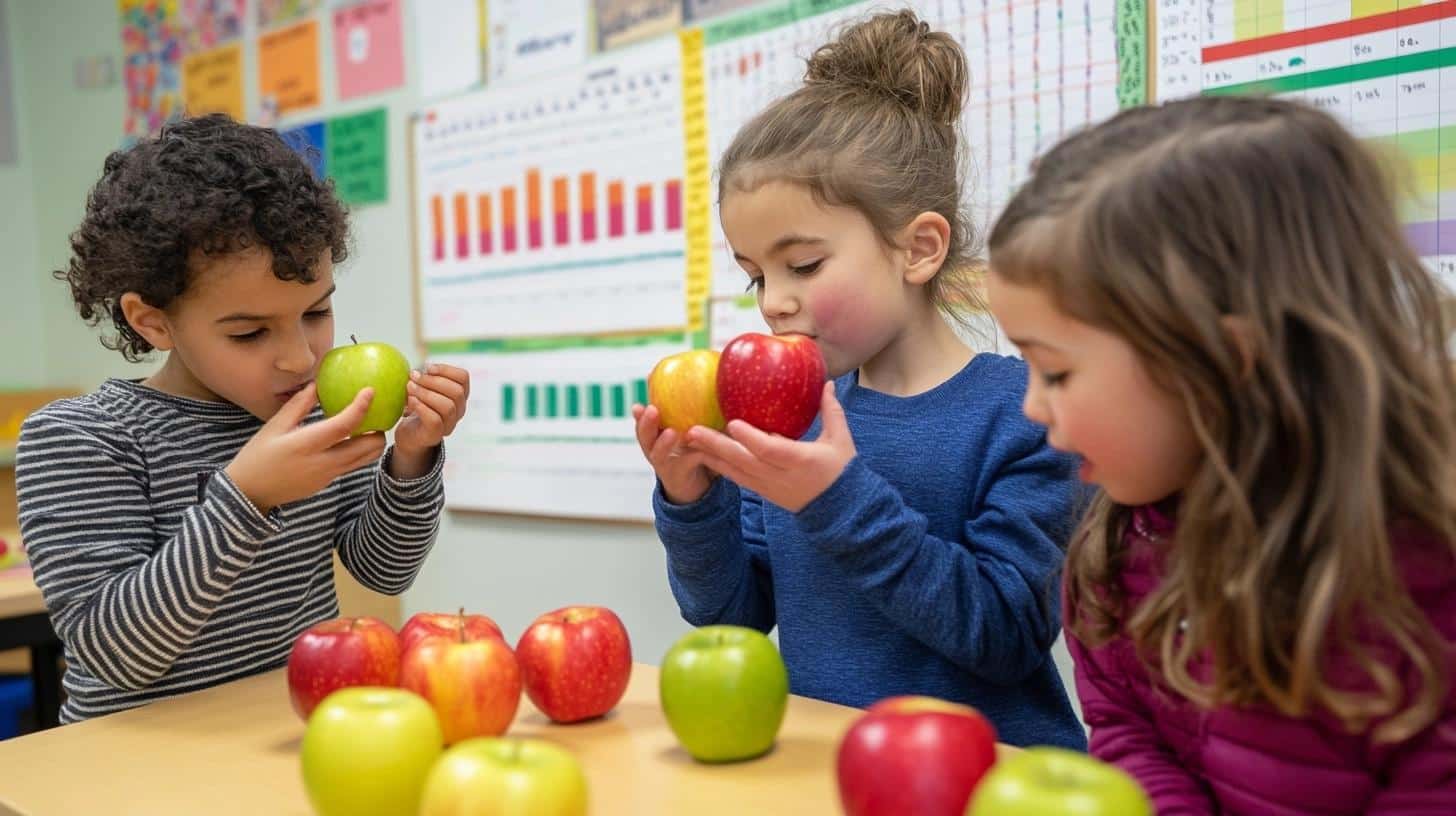
Let kids taste different apples, red, green, and yellow. After trying each kind, have them vote on their favorite. Then, make a simple class graph showing the results.
This activity teaches kids about comparing, making choices, and basic graphing skills.
2. Apple Stamping Art
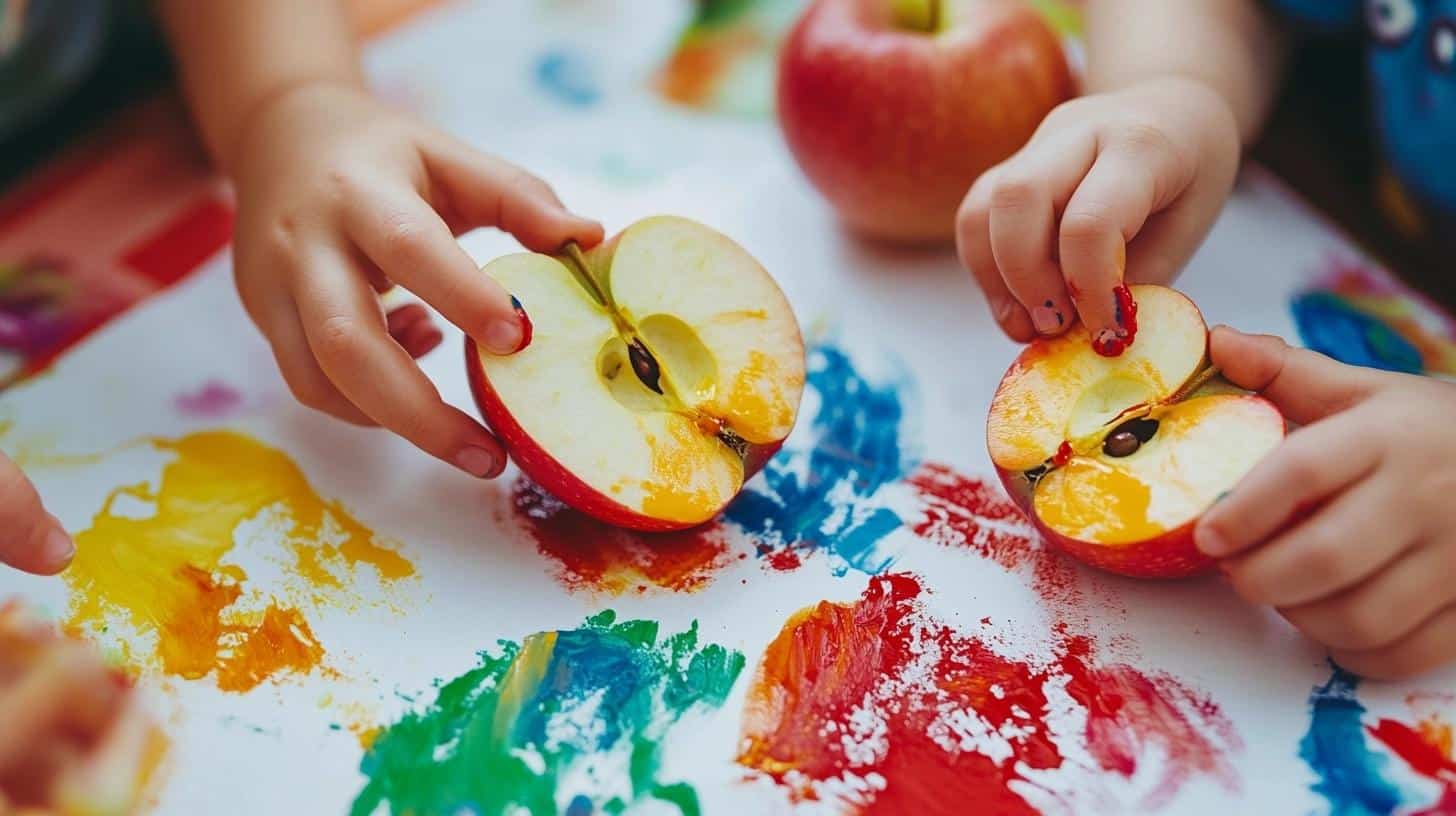
Cut apples in half and dip them into colorful paint. Let kids stamp the painted apples onto paper. They’ll create fun prints and can explore different colors, patterns, and textures.
It’s a great way to encourage creativity and fine motor skills.
3. Sink or Float Apple Science
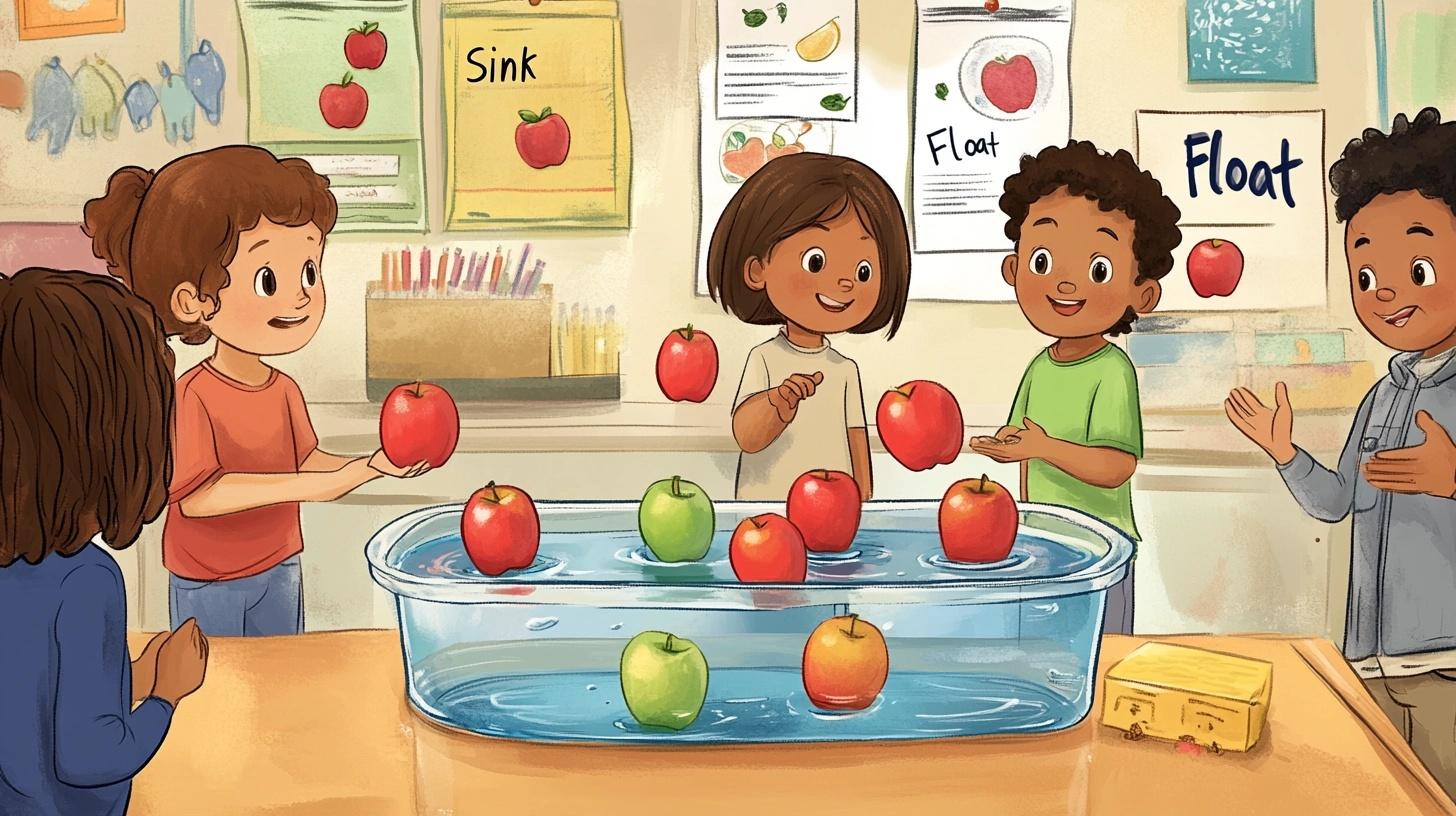
Fill a large tub with water. Have kids guess whether each apple will sink or float, then test their ideas by placing apples in the water.
Experiment with different sizes and types of apples to see how results change. This activity builds curiosity and early science thinking.
4. Parts of an Apple Learning
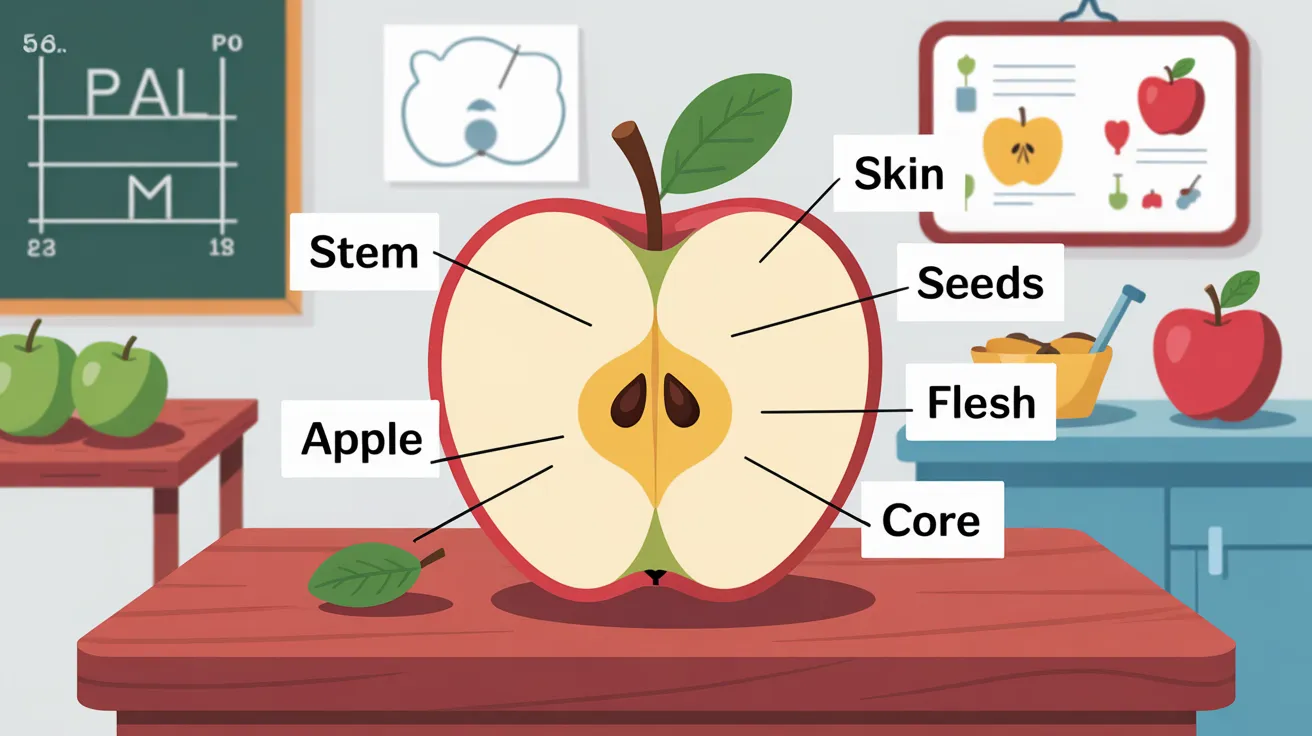
Cut open an apple and identify its parts: stem, skin, seeds, flesh, and core. Provide a simple worksheet or labels for students to match each part of the diagram.
This activity helps kids practice observation skills and learn new vocabulary.
5. Apple Pattern Making
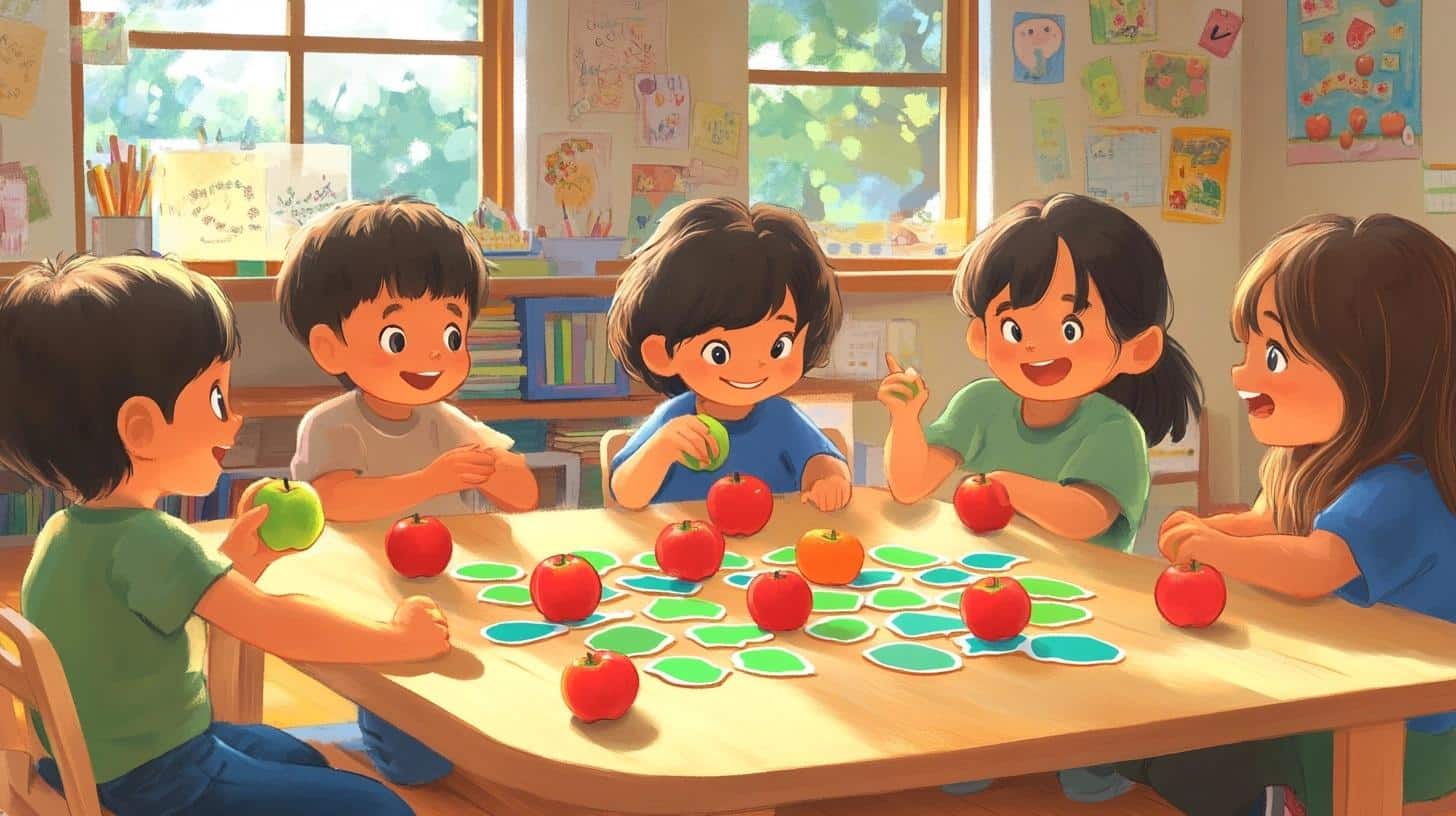
Give kids apple-shaped stickers or cutouts in various colors, like red and green. Let them make color patterns such as red-green-red-green, or more challenging ones.
This is perfect for introducing early math concepts and logic skills.
6. Apple Alphabet Match
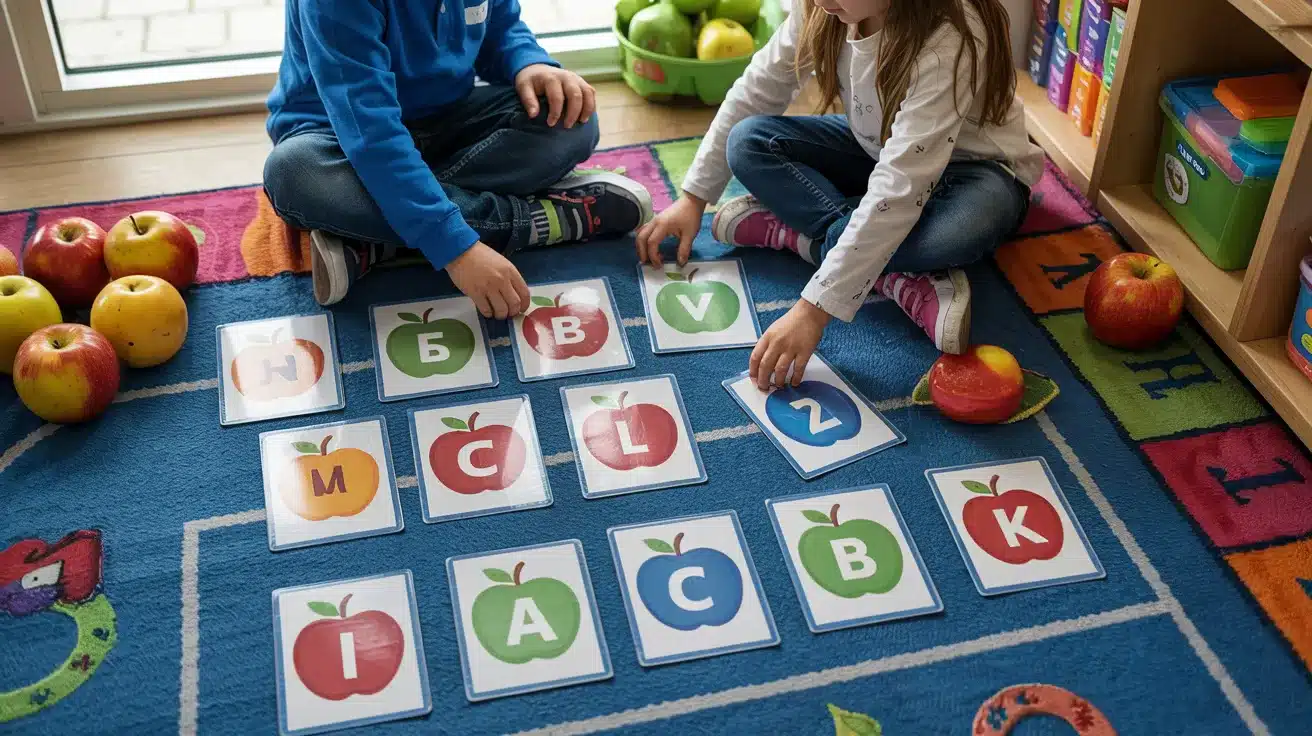
Create pairs of apple-themed cards with uppercase and lowercase letters. Kids match each uppercase letter with its lowercase counterpart.
This playful activity enhances letter recognition and phonics.
7. Apple Playdough with Seeds
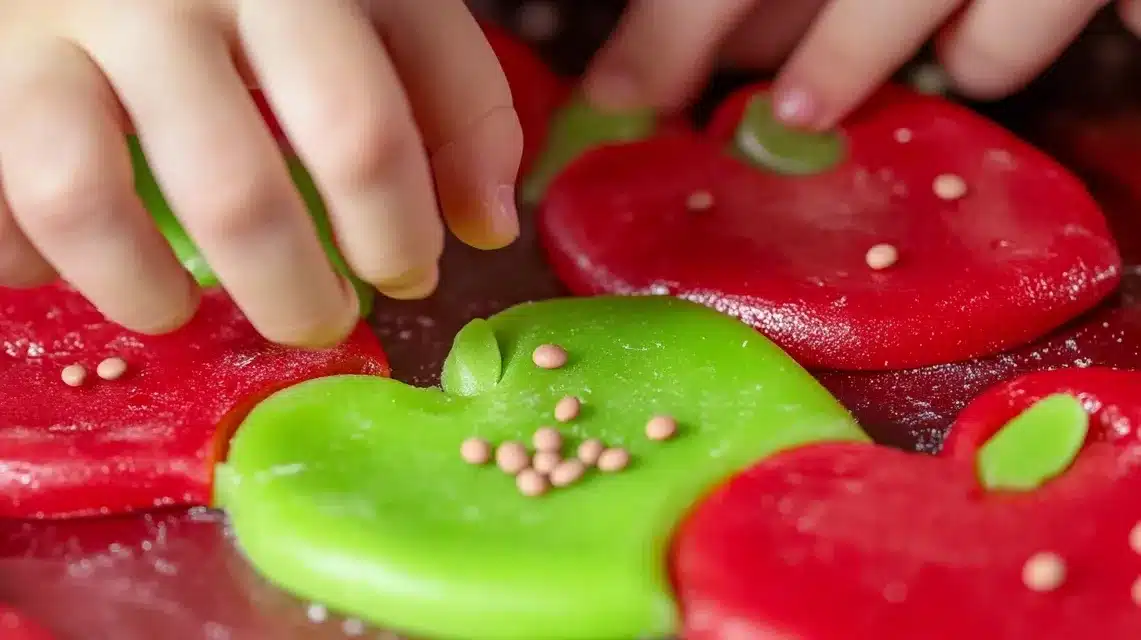
Make homemade red or green playdough, and add cinnamon for a fun apple scent. Give kids dried beans as pretend apple seeds to count, sort, or press into their playdough apples.
This combines sensory exploration with counting practice.
8. Apple Poem in a Pocket Chart
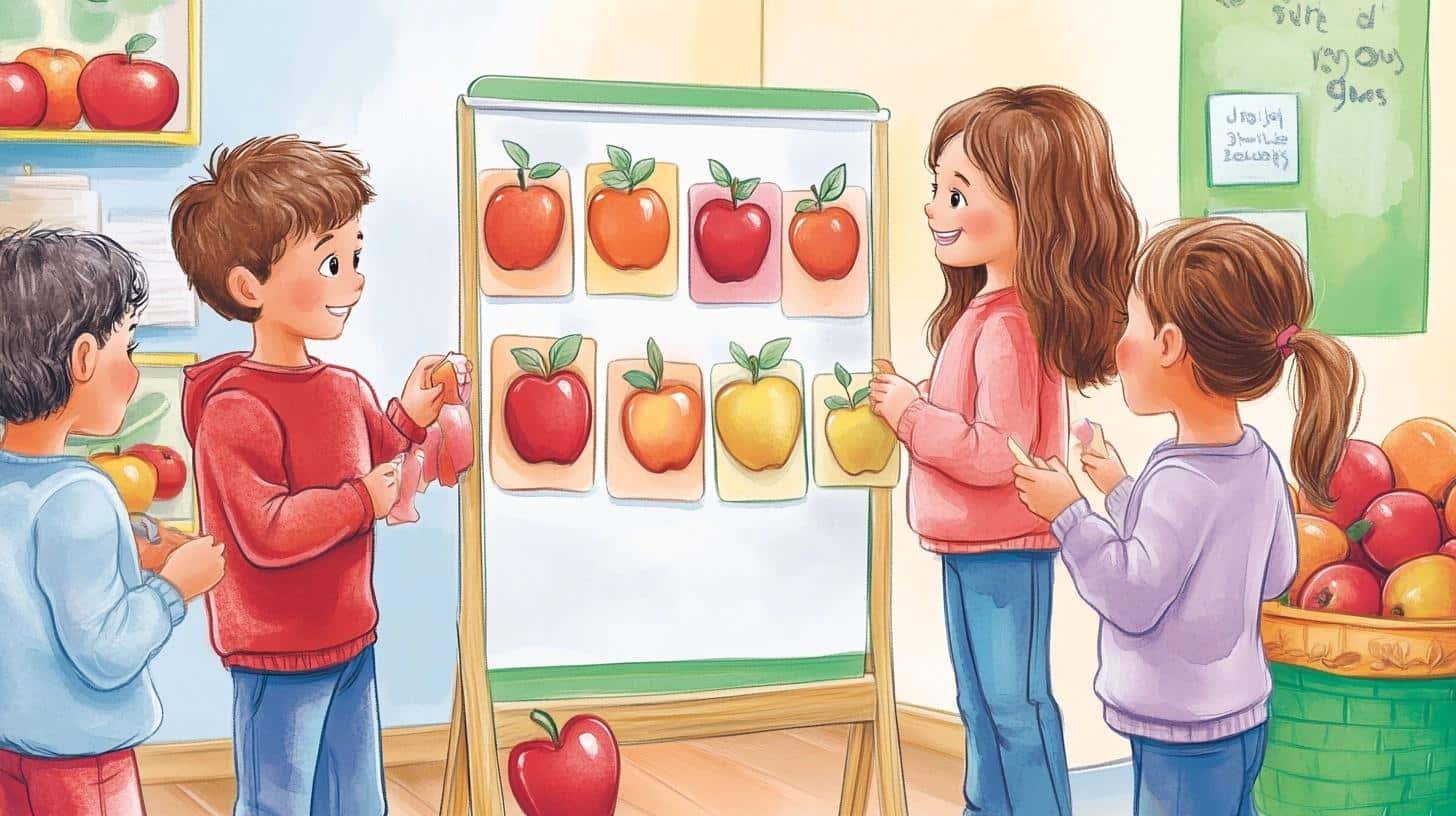
Choose a short apple-themed poem and write each word on a separate card. Place these cards in a pocket chart. Kids can help put the words in the correct order to rebuild the poem.
It’s great for building reading skills and word recognition.
9. Apple Hat Craft for Johnny Appleseed Day

Create simple apple hats using red paper circles, green leaves, and sentence strips.
Kids assemble their hats, which supports fine motor development and makes a fun accessory for celebrating Johnny Appleseed Day.
10. Bubble Wrap Apple Prints
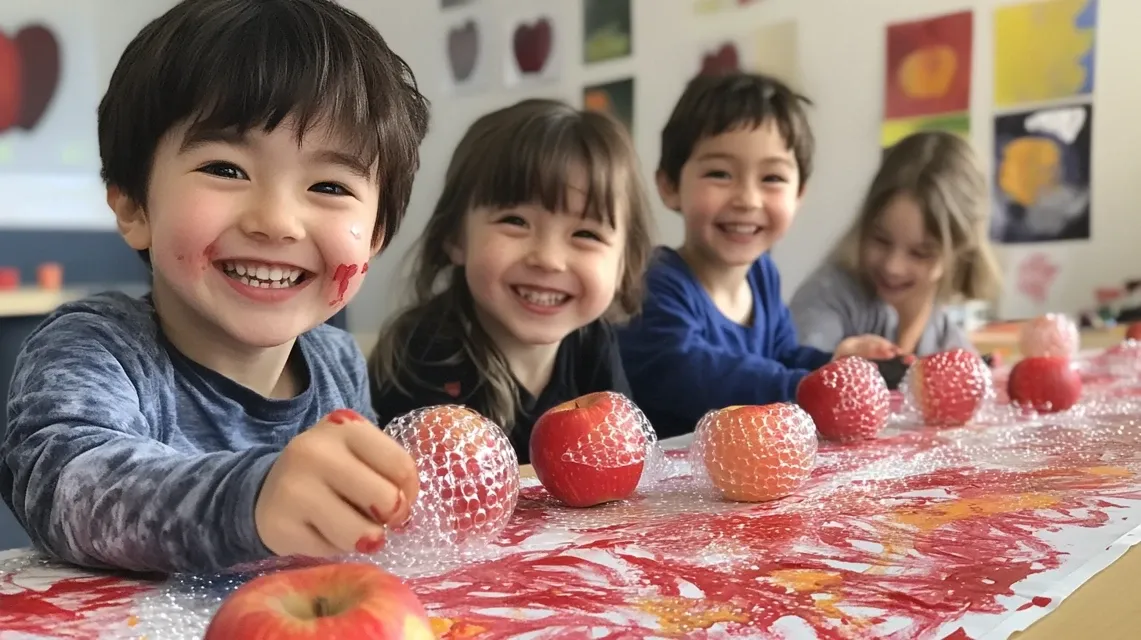
Place bubble wrap over apple-shaped cardboard cutouts and paint them. Kids press these onto paper to create unique textured apple prints.
This craft engages sensory exploration, creativity, and coordination.
11. Apple Story Sequencing
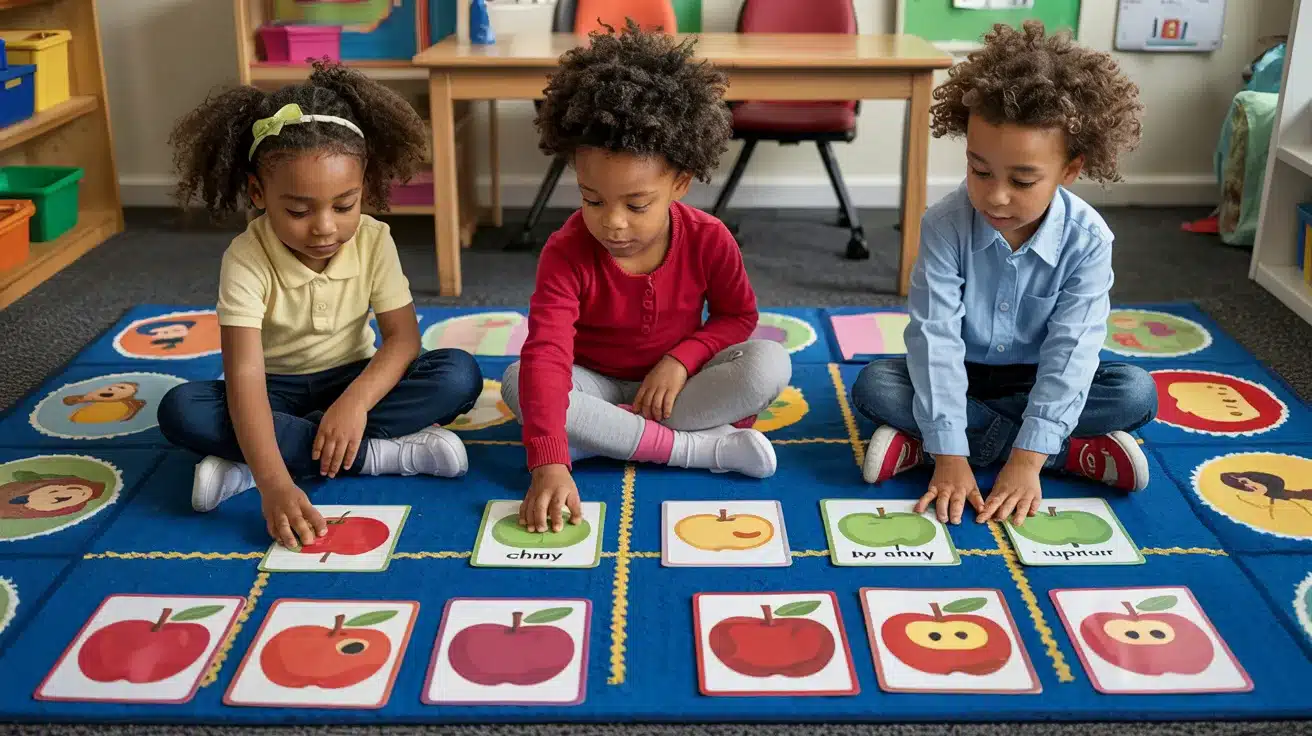
Read a fun apple-themed story, such as “Ten Apples Up on Top.” After the story, provide kids with picture cards from the book.
Have them arrange the cards in the correct sequence to retell the story, enhancing their comprehension and storytelling skills.
What is Johnny Appleseed Day?
Johnny Appleseed Day is a wonderful opportunity to celebrate the famous folk hero.
Through stories, crafts, and hands-on activities, kids can learn about his contributions and the importance of apples.
Who was Johnny Appleseed?
Johnny Appleseed was a real person named John Chapman who lived from 1774 to 1845.
He traveled across parts of Pennsylvania, Ohio, Indiana, and Illinois, planting apple trees. Johnny was known for his kindness to animals, his simple way of living, and his love of nature.
He often wore simple clothes, walked barefoot, and carried a cooking pot that he sometimes wore as a hat.
Many stories about him mix facts with folk tales, but he truly did help spread apple trees across America when the country was still young.
Dress-up Day + Mini Play for Johnny Appleseed Day
Turn your classroom into a living history lesson with a Johnny Appleseed dress-up day.
Kids can wear simple clothes like plain t-shirts, rolled-up pants, and, if weather permits, no shoes (or wear socks only indoors).
Make pot hats from black construction paper or bring in small plastic pots to wear briefly for photos.
Create a simple play where children act out Johnny’s life. One child can be Johnny, walking through the classroom “planting” paper apple seeds.
Other children can pretend to be trees that grow, animals that Johnny helps, or settlers who receive apple seeds. Keep lines very short and simple for kindergartners to remember.
Tips for Making Apple Activities Easy and Fun
Making apple-themed activities easy and fun for kids requires simple materials and clear instructions.
These tips will help you create enjoyable experiences that engage little ones and foster learning in a hands-on way.
Plan Ahead
Getting ready early makes apple activities run smoothly. Print worksheets, gather supplies, and wash apples a few days before you need them.
Check if any students have apple allergies so you can plan alternatives. Ask parent volunteers to help cut apples if you need them sliced.
When you prepare in advance, you can focus on helping students during the activities instead of scrambling to get things ready.
Group Work
Setting up stations or centers works great for apple-themed learning.
Create 4-5 different activity stations around your classroom, such as an apple-counting station, a tasting table, an art area, and a reading corner featuring apple-themed books.
Small groups can rotate through each station while you help at the most challenging one.
This approach keeps everyone busy and makes classroom management easier, especially when working with messy materials like real apples.
Keep it Simple
You don’t need fancy supplies for great apple activities. Regular red, yellow, and green construction paper works perfectly for apple crafts.
Paper plates make good apple shapes. Math counters can be apple seeds (or use real ones). Plain white paper works for apple prints if you cut an apple in half, dip it in paint, and stamp it.
When activities use basic supplies, you can do them anytime without special shopping trips.
Tie it All Together
Making connections between activities helps students remember what they learn. Display the apple graphs that your class creates during math time.
Hang apple artwork on the walls. Keep Apple Books in an easy-to-reach spot all week. Talk about apples during snack time by using words like “crunchy,” “sweet,” or “juicy.”
When students see the same theme across different activities, the learning sticks better, and they start making their own connections between subjects.
Final Thoughts
Apple activities for kindergarten offer a perfect combination of fun and education, providing kids with hands-on learning that enhances their skills in math, science, and more.
Throughout this blog, we’ve shared creative ways to bring apples into your classroom, from taste tests to apple stamping art.
These activities not only engage children but also promote key developmental skills like fine motor abilities, problem-solving, and social interaction.
Now it’s your turn to try these apple activities for kindergarten and see how they can change your teaching.
Ready to make learning with apples even more exciting? Start planning your apple-themed lessons today.

